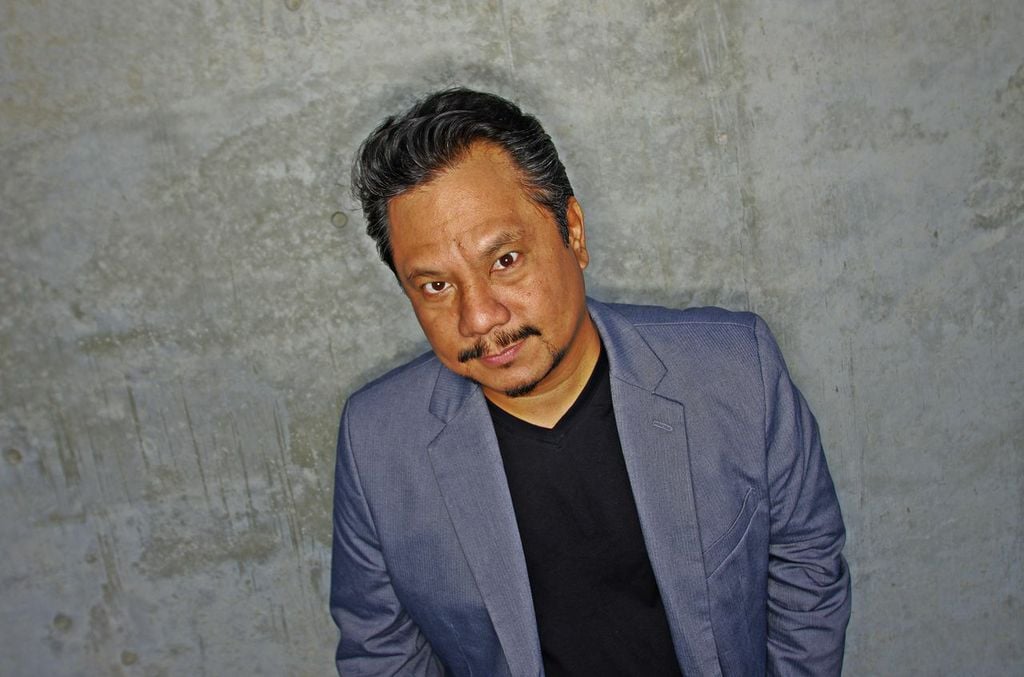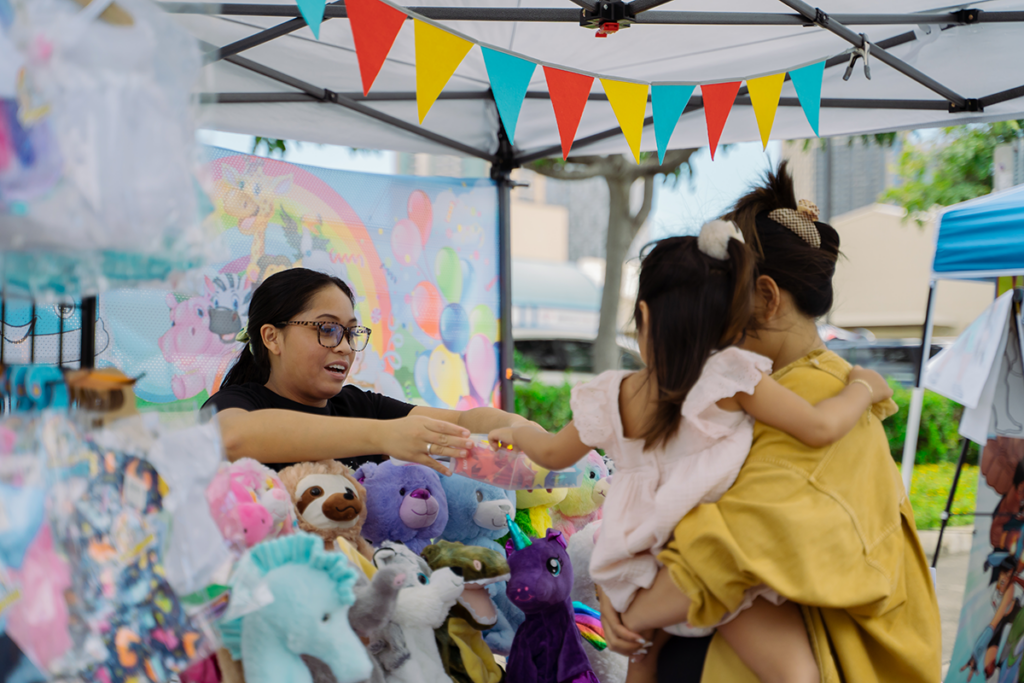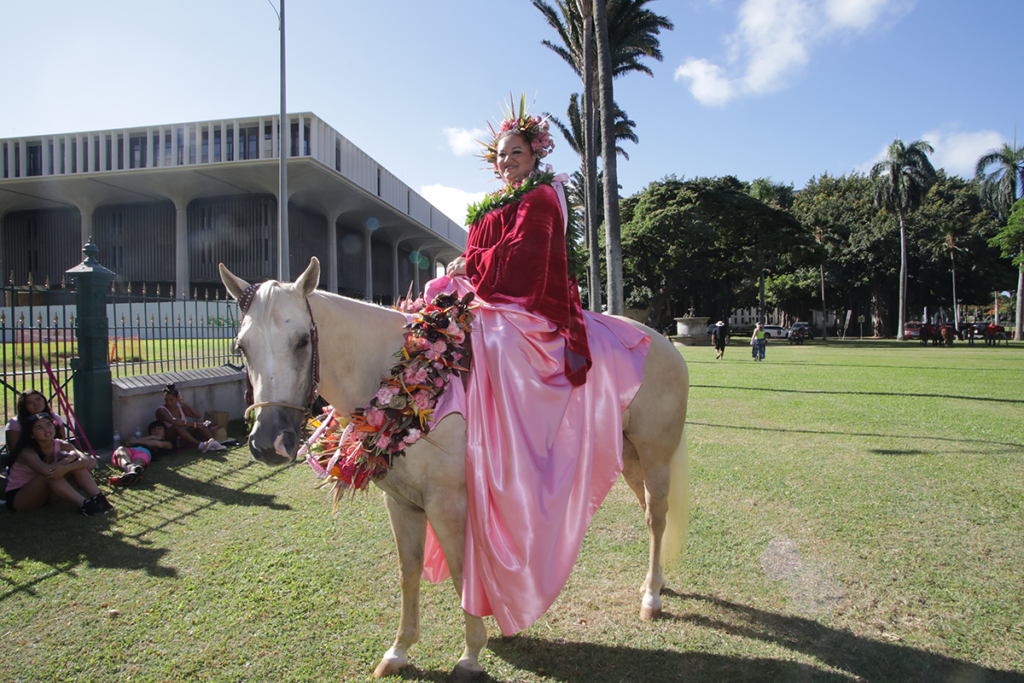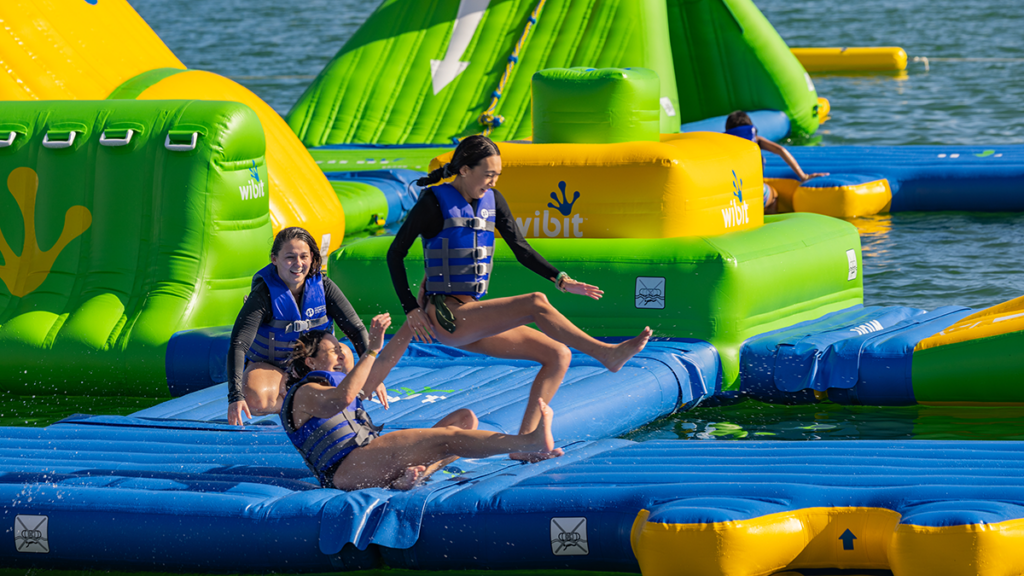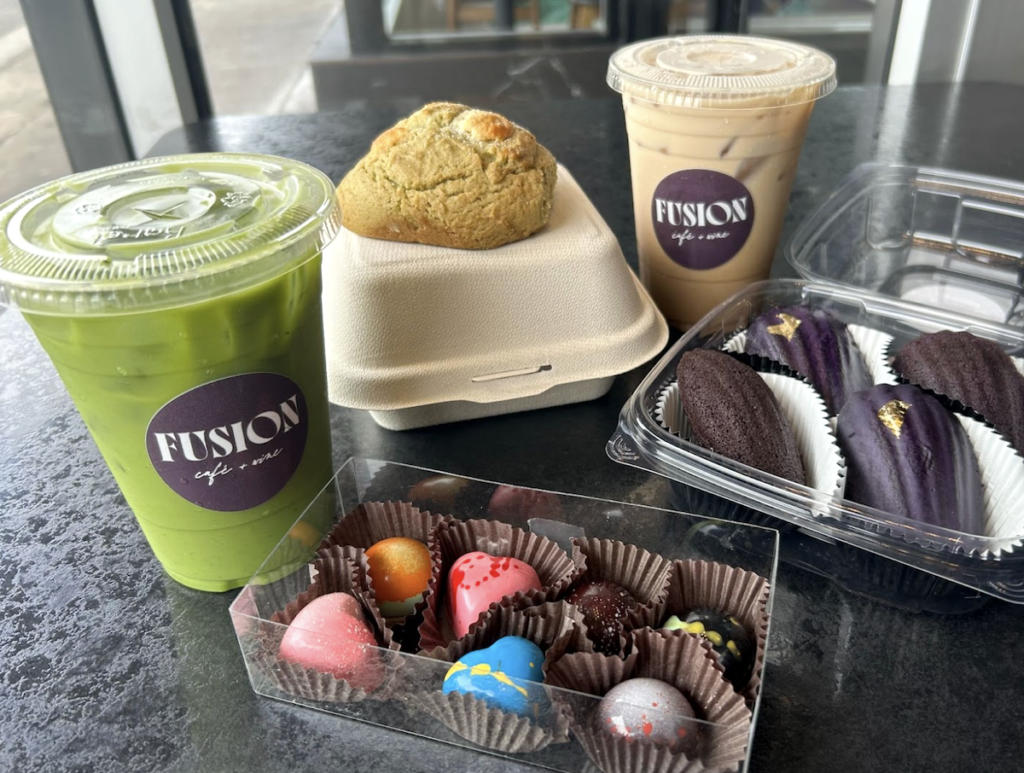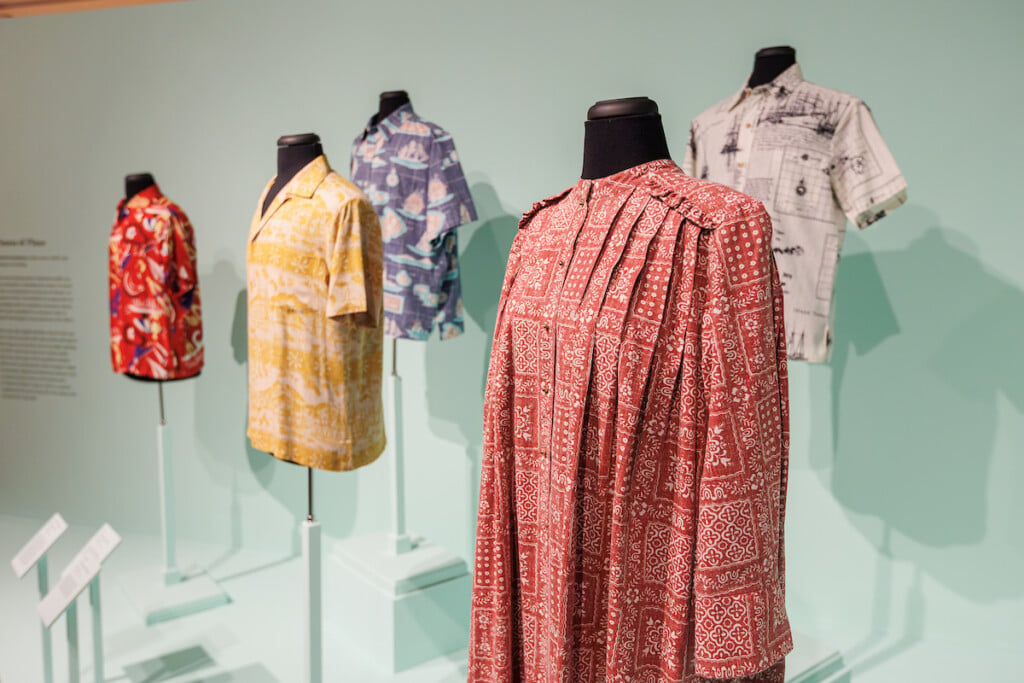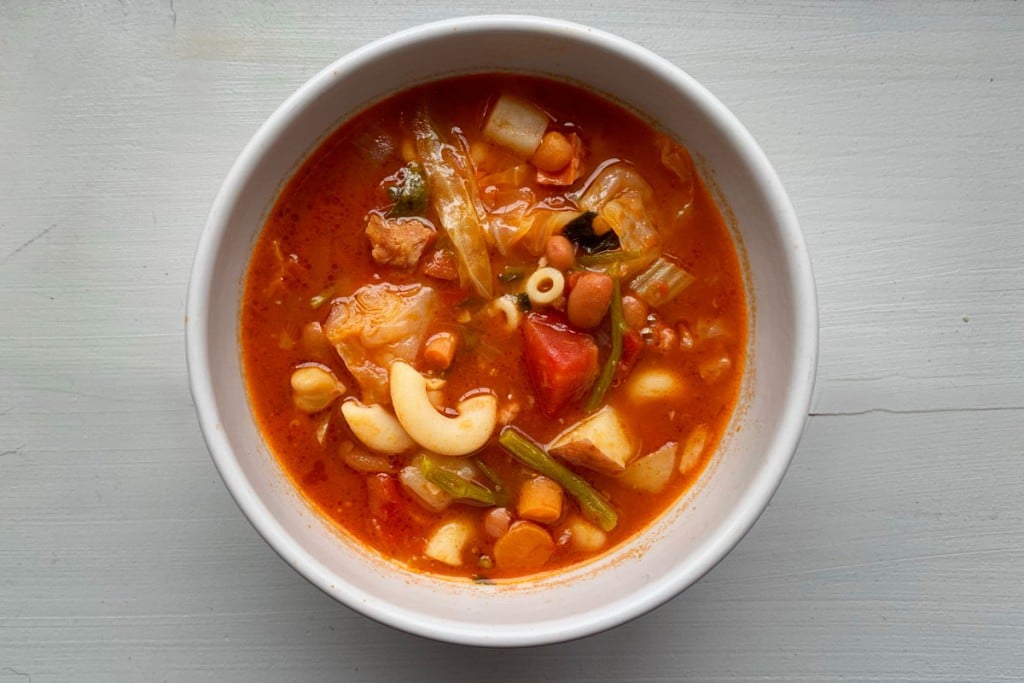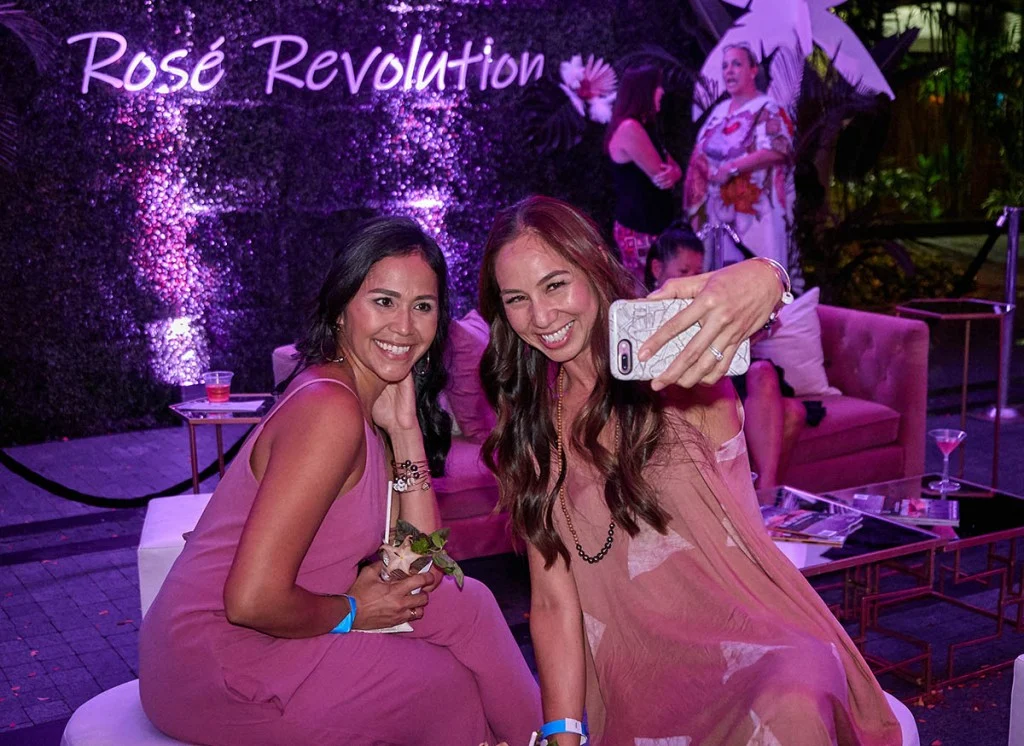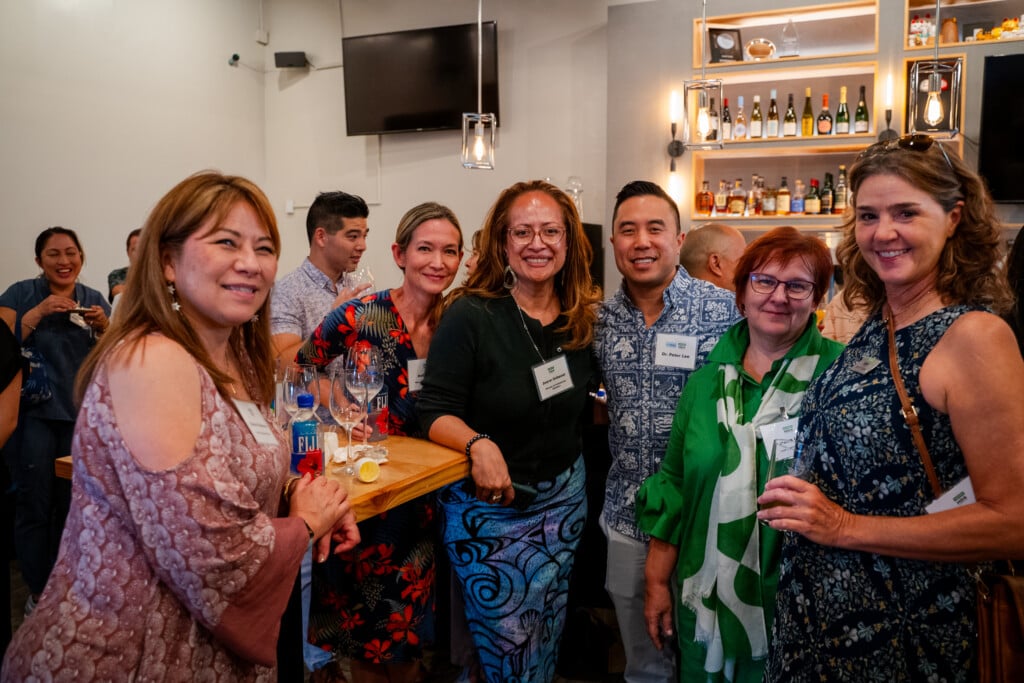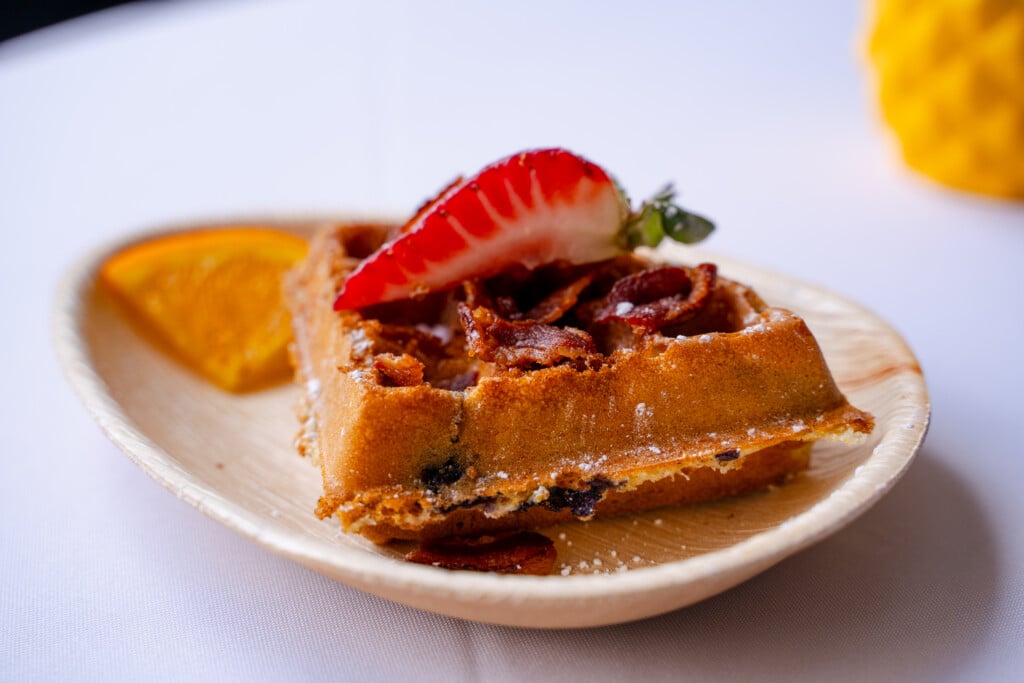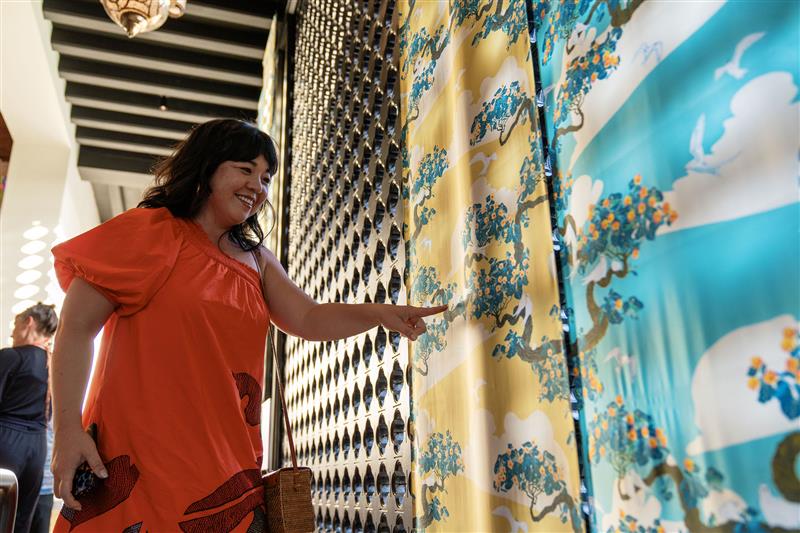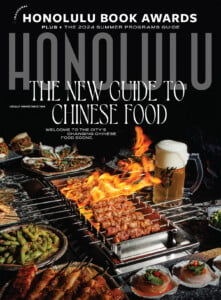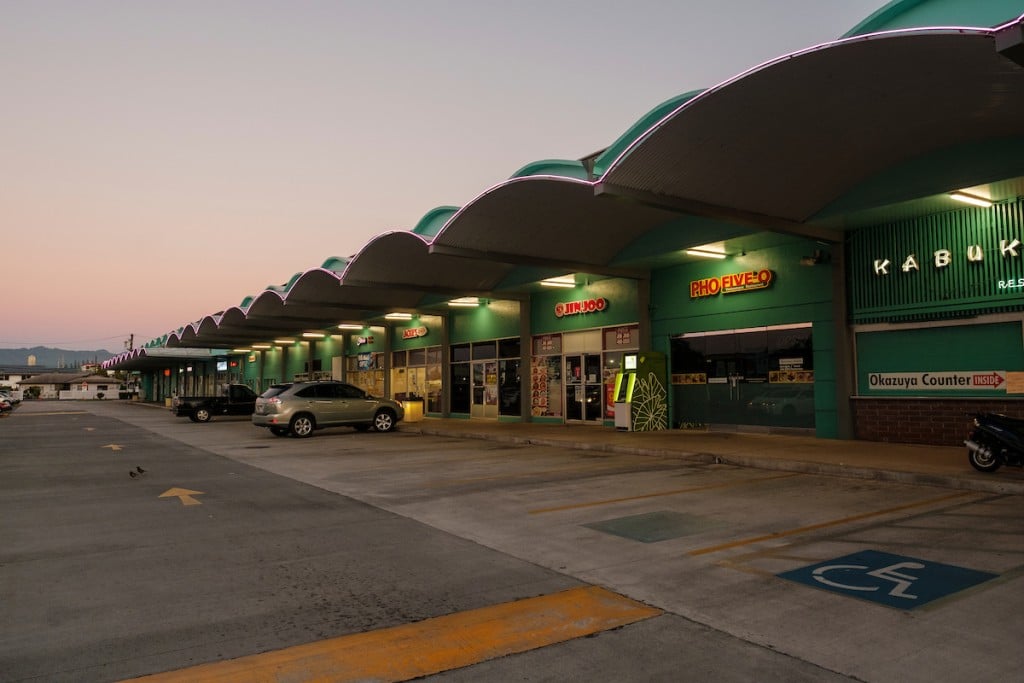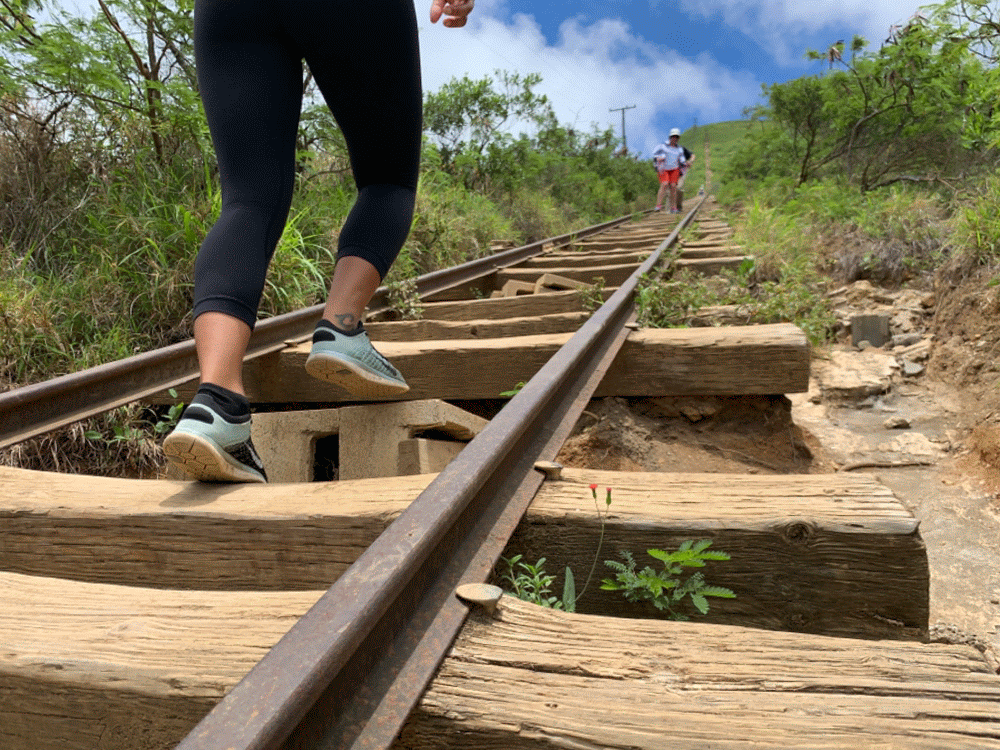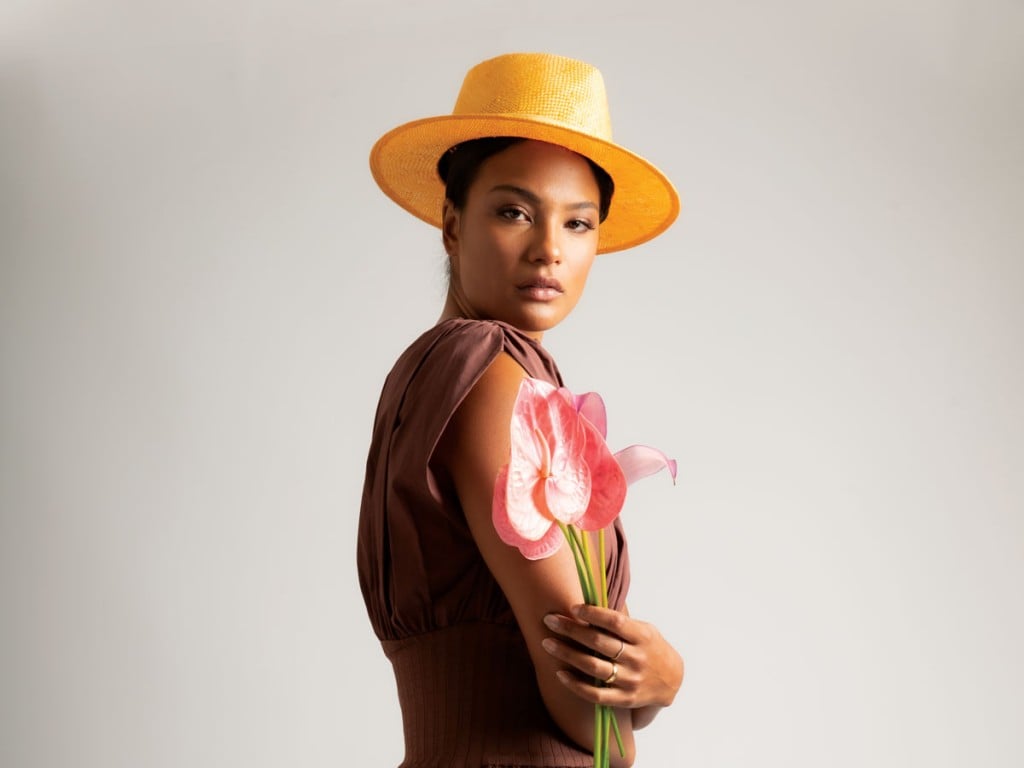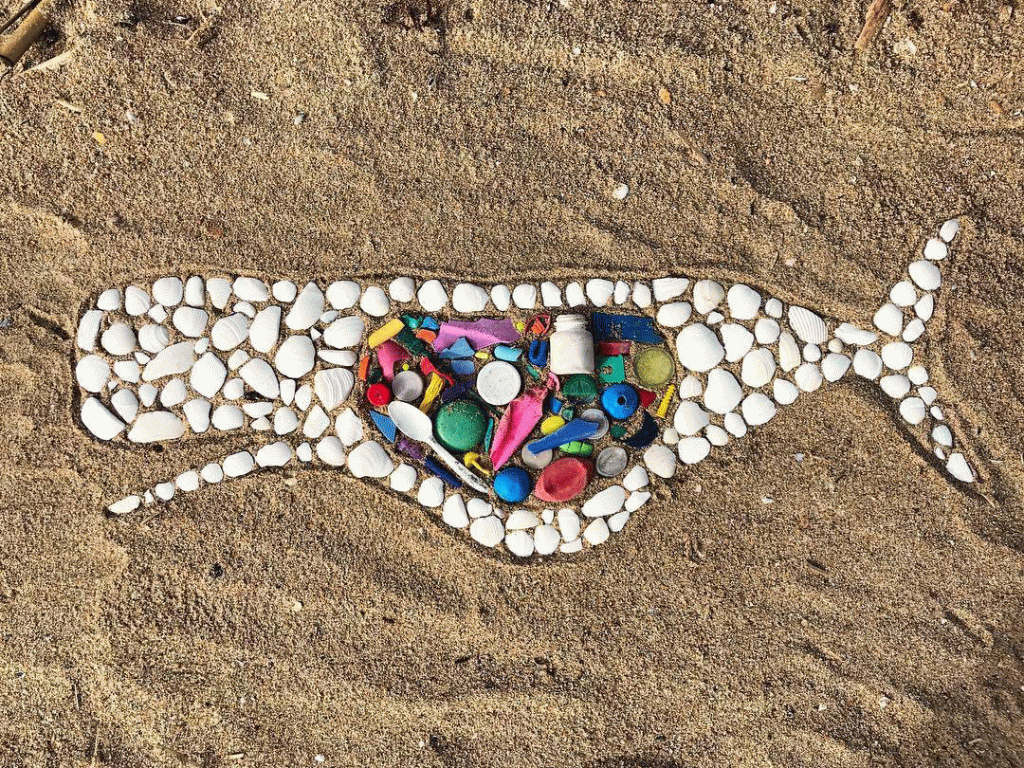The 10 Best Films and Television Shows Shot in Hawai‘i
From Marvel’s “Inhumans” to “Magnum, P.I.,” we rank the biggest movies and series ever filmed in the Islands.

Photo: Courtesy of IMDB
From Waikīkī Beach to downtown Honolulu to the Nā Pali Coast, Hawai‘i has served as a backdrop for hundreds of feature films and television shows over the decades. Sometimes the Islands are playing themselves, sometimes they’re a stand-in for the jungles of Nigeria (Tears of the Sun), wartime Vietnam (Tropic Thunder), Jurassic Park’s Isla Nublar or an arena for The Hunger Games.
Here’s a roundup of our 10 favorite and least favorite movies and shows filmed in Hawai‘i, based on production quality, cultural impact, effect on the state and respect for the Islands. We’ve excluded television specials (like Elvis Presley’s 1973 Aloha from Hawai‘i via Satellite), Hawai‘i-themed episodes of TV shows (everything from The Brady Bunch to Mad Men) and programs that take place in Hawai‘i but weren’t actually filmed here (even 2002’s animated Lilo & Stitch was primary illustrated in Florida, and 2012’s Cloud Atlas featured a futuristic Kona that was actually filmed on a Mediterranean island). Let us know your thoughts in the comments, and pick up a copy of HONOLULU’s October issue to read more about the local film industry, including an interview with Moana screenwriters Aaron and Jordan Kandell.
The Best
10. Forgetting Sarah Marshall (2008)
Actor Jason Segel wrote and starred in this romantic comedy where he plays Peter, a music composer who books a trip to Hawai‘i to recover after a recent breakup but inadvertently runs into his ex (Kristen Bell) on vacation with her new rockstar boyfriend (Russell Brand). This is another movie that also mostly takes place at Turtle Bay, but unlike Mike and Dave Need Wedding Dates, Marshall actually tries to celebrate local culture. Speaking roles went to Hawai‘i performers, including Native Hawaiian and Native American actor Branscombe Richmond, and Lā‘ie native and Samoan sumo wrestler Teila Tuli, who both have memorable scenes at a bar and a lū‘au.
Segel (who wrote the screenplay for Marshall in Hawai‘i) also captured some local tropes spot-on, like the bartender who moved here from Oakland and prides himself on being able to name 200-plus types of fish (“Humuhumunukunukuapua‘a, yeah!”) and Paul Rudd as a Mainland transplant who changes his name from Chuck to Kunu (a word that means “cough” in Hawaiian) and becomes a surf instructor.
Most Iconic Hawai‘i Scene: When Sarah attempts to insult Turtle Bay receptionist Rachel (Mila Kunis) over dinner, which becomes a dialogue about Hawai‘i itself:
Sarah: [Hawai‘i is] nice but I think for, like, a week, tops. Any more than that and I know I’d go crazy because I think that Hawai‘i is a place to escape for people who can’t deal with the real world.
Rachel: Yeah, you know, there’s so few personal shoppers and pet therapists. Gosh, it’s such a hard life. (She suddenly kisses Peter and eats cake.) I like living here.
SEE ALSO: Shailene Woodley Fights for Life and Love in “Adrift,” by “Moana” Writers the Kandells
9. Blue Hawai‘i (1961)
This hokey romantic musical was the first of three films Elvis Presley would make in Hawai‘i in the 1960s (the others being Girls! Girls! Girls! in 1962 and Paradise, Hawaiian Style in 1965). Here, he plays a twentysomething surfer fresh out of the Army whose mother (Angela Lansbury, only 36 at the time) wants him to take over his father’s Great Southern Hawaiian Fruit Co., but he instead wants to work as a tour guide with his girlfriend. The film ends with the marriage of both careers (and Presley with his girlfriend), as they decide to provide tourist services for the Mainland salesmen of the fruit company. Talk about a prophetic look at the rise of commercial tourism in Hawai‘i, which was a $16 billion industry for Hawai‘i in 2017.
Blue Hawai‘i does little more than promote the stereotype of Hawai‘i as “paradise,” which continues to pervade the identity of the Islands to the present. But this film is notable for being one of the first to do so, putting the 50th state (just 2 years old at the time of the film’s release) on the map as a destination for Americans. In addition to featuring famed Hawaiian entertainers Lani Kai and Hilo Hattie in brief roles, the movie also marks the beginning of Hawai‘i’s relationship with Presley, whose subsequent concert performances would help raise funds for the creation of the USS Arizona Memorial and whose image would become synonymous with Hawai‘i throughout the 1960s. For many older baby boomers picturing Honolulu in their minds, Blue Hawai‘i is likely what they imagine.
Most Iconic Hawai‘i Scene: The big floating wedding ceremony at the end of the film that takes place at the former Coco Palms Resort in Wailua on Kaua‘i.
SEE ALSO: The Strange Stories of Hollywood Filming in Hawai‘i
8. From Here to Eternity (1953)
Burt Lancaster, Montgomery Clift and Frank Sinatra star as Army soldiers in From Here to Eternity, wrestling with courage versus cowardice, an enlisted versus commissioned military class structure and a devotion to duty, even in the face of corruption. Based on author James Jones’ 800-plus-page novel dramatizing life among U.S. troops stationed in Hawai‘i in the weeks leading up to the attack on Pearl Harbor, From Here to Eternity resonated with audiences when it premiered in 1953, offering a stark and critical look at the American military at a time when McCarthyism and Communism scares were in full swing throughout the country. Eternity was a hit (although not with the military) with 13 Academy Award nominations that resulted in eight wins, including Best Picture, Best Director, Best Screenplay and Best Supporting Actor for Sinatra. Shot on location on O‘ahu at Schofield Barracks, Kūhiō Beach Park and, most notably, at Hālona Beach Cove, the film provided a gritty, realistic look at some of the struggles faced by American GIs in the Islands in the 1940s.
Most Iconic Hawai‘i Scene: What’s probably the most iconic beach scene in all of cinema, with actors Burt Lancaster and Deborah Kerr embracing in the surging tide at Hālona Beach Cove (now widely known as Eternity Beach).
SEE ALSO: 5 TV and Movie Scenes That You Probably Didn’t Know Were Filmed in Chinatown
7. The Byrds of Paradise (1994)
The premise of The Byrds of Paradise, where a dad relocates himself and his three kids to Hawai‘i from Connecticut after his wife dies, sounds like the makings of some terribly saccharine Lifetime movie. While the journey of a single parent trying to heal a family might be well-trod territory for television dramas, doing so thoughtfully in Hawai‘i was something audiences hadn’t seen before. This ABC series, starring Seth Green and Jennifer Love-Hewitt, touched upon Hawai‘i culture in a truthful way, from the family having to go visit their dog during the lengthy quarantine process to preparing for tsunami threats. The show had an appreciation and affection for local culture; in one episode, the school performs a production of Shakespeare’s Twelfth Night entirely in pidgin. Canceled after just 12 episodes, Byrds of Paradise may have been too foreign for mid-’90s audiences. But its impact would usher in later shows with similar plots, like Everwood and Gilmore Girls, and, hopefully, helped reframe the notion of Hawai‘i as a paradise where people can visit to escape.
Most Iconic Hawai‘i Scene: Folk music icon Arlo Guthrie, who played a character on Byrds, singing Country Comfort’s “Waimānalo Blues” alongside Charlie Kealoha, Robert Kekaula and the late Cyril Pahinui. Hana hou!
6. The Descendants (2011)
At first glance, the story about a white guy named Matthew King (George Clooney) who has to decide whether or not to sell his family’s 25,000 acres of land on Kaua‘i doesn’t sound like the makings of a thoughtful film about Hawai‘i. But The Descendants was a surprisingly moving drama when it came out in 2011. Well, maybe not that surprising: It’s based on a novel by Hawai‘i born and raised writer Kaui Hart Hemmings and adapted for the screen by Alexander Payne, the writer and director of other acclaimed hits Sideways, About Schmidt and Election. There are so many ways this movie could’ve gone wrong but instead, The Descendants rings true. You feel like you know this family and, as they wrestle with issues of heritage and legacy in a way not usually seen in stories about the Islands, The Descendants becomes an introspective journey that reaffirms messages of family and resilience. No man is an island, even if he might be living on one.
Most Iconic Hawai‘i Scene: Watching the King family hang out in their stately two-story home, located in real life just off Old Pali Road.
5. Jurassic Park (1994)
Isla Nublar isn’t real, but the fictional island home of Jurassic Park (off the west coast of Costa Rica in Michael Crichton’s original novel and the subsequent films) is brought to life by the real majesty of the Ko‘olau Range on O‘ahu and Waimea Canyon on Kaua‘i. While audiences probably best remember the scenes shot at Kualoa Ranch, director Steven Spielberg filmed across Kaua‘i, Maui, O‘ahu and even Ni‘ihau. Watching Jurassic Park is a veritable tour of the Islands and the film’s crew rode out Hurricane Iniki with locals when it touched down in September 1992. A few rainy scenes were actually shot during the hurricane and the storm spared actor Samuel L. Jackson a lengthy death scene when the movie’s visitor center was ultimately destroyed by the hurricane. Off-screen, Jurassic Park left a massive footprint (ahem) on Hawai‘i’s economy and more Jurassic Park installments, including The Lost World in 1997, Jurassic World in 2015 and last year’s Fallen Kingdom.
Most Iconic Hawai‘i Scene: A flock of Gallimimus dinosaurs running through a valley, which Alan Grant (Sam Neill) and two kids watch (“I bet you’ll never look at birds the same way again”) from behind a fallen tree. You can still hide behind it today, on tours of Hollywood filming locations at Kualoa Ranch.
SEE ALSO: The Ultimate “Jurassic World: Fallen Kingdom” Drinking Game
4. Magnum, P.I. (1980–1988)
The demolition of an old house in Hawai‘i doesn’t always make the news, but one did in 2018, when an 8,900-square-foot Spanish colonial mansion in Waimānalo built in 1933 was torn down. For years, it served as the “Robin’s Nest” residence of Hawai‘i’s most famous fictional private investigator: Thomas Magnum, portrayed by Tom Selleck (a role which famously prevented the actor from playing Indiana Jones in Raiders of the Lost Ark). Along with Magnum’s caterpillar-thick mustache, Detroit Tigers baseball caps and cherry red Ferrari 308 GTS, the house became a visual trademark for a series about the ultimate Navy SEAL turned beach bum.
But unlike other “serious” detective shows of the era such as Miami Vice, Magnum was able to engage with local culture, often holding a playful mirror to the bizarre personalities who found their way to Hawai‘i and the ridiculously extravagant lifestyles of rich expats in the Islands. Plus, have aloha shirts ever looked cooler on a haole?
Most Iconic Hawai‘i Scene: The dark season 7 episode “Laura,” guest starring Frank Sinatra in his last major role, on a hunt for his granddaughter’s killer. His search takes place through a seedy mid-’80s Hotel Street, complete with former Chinatown strip clubs Club Hubba Hubba, Benny’s Danceland and the Esquire Theatre, plus views inside Swing Club and Mini Garden (where Lucky Belly is today).
SEE ALSO: 41 Thoughts We Had While Watching the New “Magnum P.I.”
3. Lost (2004–2010)
The mysterious, moving, time-traveling island was as much a character as Jack, Sawyer, Kate, Hurley, Desmond or any others (or the Others) on ABC’s Lost, and few shows utilized so much of O‘ahu. From 2004 to 2010, J.J. Abrams and Damon Lindelof’s surreal sci-fi series captivated American audiences with its nonlinear, overlapping narratives and was nominated for more than 250 awards, including 54 Emmys. For locals, tuning in to the show each week was a new opportunity to see friends and family making cameos as extras and to see various Hawai‘i locations double as, basically, anywhere else in the world. Whether it was re-creating Sydney Airport in the Hawai‘i Convention Center, a village in Nigeria at the Waialua Sugar Mill or downtown Berlin with hundreds of pounds of real ice on Merchant Street, Lost showed the world the true breadth of “looks” that Hawai‘i could portray and played a massive role in helping bring new TV shows to the Islands.
Most Iconic Hawai‘i Scene: Jack, waking up on Mokulē‘ia Beach and meeting the other crash survivors in the first scene of the pilot episode. Having the charred hull of Oceanic Flight 815 on O‘ahu’s North Shore for a few months back in 2004 became a harbinger for much, much, MUCH stranger things to come on Lost.
SEE ALSO: Get Lost: Visit 16 Iconic O‘ahu Filming Locations From the Hit Show
2. Picture Bride (1995)
Inspired by the real plight of thousands of primarily Japanese, Okinawan and Korean women who traveled to Hawai‘i in the early 20th century to marry immigrant workers based only on photographs and family recommendations, Picture Bride was directed by Honolulu-born filmmaker and activist Kayo Hatta and co-written by her sister, Mari. Although neither of their grandmothers who originally came to Hawai‘i were picture brides themselves, the Hatta sisters shared real stories that had been passed down from first-generation immigrants to their descendants—and subsequently captured the voices of a generation that left their families and homes in the hopes of a new life in America.
This was a landmark Asian American film when it was released in 1995. Starring Youki Kudoh, Tamlyn Tomita and Cary-Hiroyuki Tagawa (plus cameos by Jason Scott Lee, Yoko Sugi, Ni‘ihau-born musician Moe Keale, taiko artist Kenny Endo and legendary actor Toshiro Mifune in one of his final roles) and filmed on-location in the Waialua cane fields on O‘ahu, the movie presented traditional Japanese culture in a way rarely seen in Western films, such as a toro-nagashi floating lantern ceremony and obon dance. Hatta also worked with Glen Grant to help imbue a sense of magical realism inspired by authentic spiritual lore of Hawai‘i and Japanese culture.
Walking around the recently closed Kawailoa Camp (which had doubled as one of Picture Bride’s filming locations and its production offices) the day after the film’s Hawai‘i premiere, Kayo Hatta wrote in an essay that she “realized the site might one day be a golf course, and that the only canefields that future generations would see might be in films like [Picture Bride].” In many ways, she was right.
Most Iconic Hawai‘i Scene: The final scene, when the plantation workers dance in a circle at a bon festival, having made peace and finding meaning in their new lives in Hawai‘i.
SEE ALSO: Quote Unquote: Improv Your Life with “Hawai‘i Five-0” Actress Kimee Balmilero
1. Hawai‘i Five-0 (1968–1980)
When the first Hawai‘i Five-0 went off the air in 1980, it was the longest-running police drama in American TV history and broke many conventions of the genre. It wasn’t set in New York City or Los Angeles like most other cop programs and it wasn’t primarily filmed on soundstages or backlots. Instead, Hawai‘i Five-0 placed the Islands in the spotlight each week as Steve McGarrett and the Five-0 team worked to bring justice to Hawai‘i as part of a special state task force modeled after an actual police unit that existed during martial law in Hawai‘i in the 1940s.
Hawai‘i had only been a state for nine years when Hawai‘i Five-0 premiered in 1968. Audiences watching around the world saw a mix of ethnicities depicted on screen (rare for the ’60s), which included the casting of locals in major roles: former HPD officer Kam Fong Chun as Detective Chin Ho Kelly, burly comedian Gilbert Lani Kauhi (aka Zulu) as Kono Kalakaua and Hilo-born Herman Wedemeyer as Sgt. Duke Lukela (in the 2010 revival, this character is played by Dennis Chun, the son of Kam Chun). The show helped kick-start Hawai‘i’s film and television industries in a major way; Magnum, P.I. was created after Hawai‘i Five-0 went off the air, partially to continue use of the production facilities created for Five-0. More than 50 years later, thanks to reruns and a reboot that began in 2010, Hawai‘i Five-0 continues to serve as the benchmark for Hawai‘i films and TV shows.
Most Iconic Hawai‘i Scene: Gotta be the opening sequence. Has there been a more memorable TV theme song ever?
Read more stories by James Charisma
